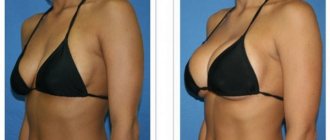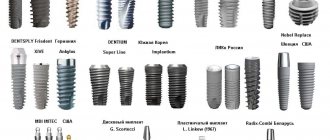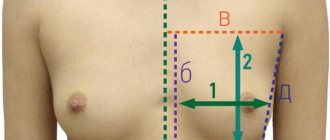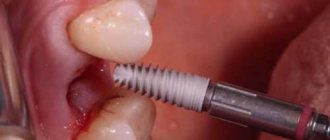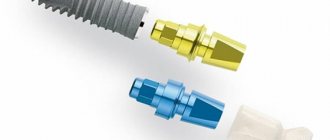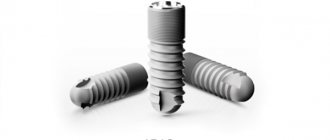Breast augmentation is the most popular plastic surgery in Moscow. Dr. Philippe Mistakopoulou helps patients choose the desired breast size, taking into account body proportions, maintaining balance and harmony. After breast augmentation, the breasts acquire a natural teardrop shape. The operation helps not only to enlarge the breasts, but also to lift them, as well as eliminate asymmetry, if any.
Breast augmentation through areola
Installation of anatomical implants with a volume of 350cc under the pectoralis major muscle, without incisions in the breast tissue. Cosmetic seam along the edge of the areola.
Open photo gallery
Breast augmentation through the areola is one of the most gentle and atraumatic methods of mammoplasty. Philip Nikolaevich installs a breast implant through the periareolar approach, making a 3.5-4 cm incision along the lower edge of the areola. The structure of the areola is close to mucous tissue, which is restored faster than the skin. Thanks to this, the scar along the edge becomes invisible within 1-1.5 months after the operation, and no scars remain on the chest. Advantages of the operation:
- Breast augmentation through the areola takes only about an hour;
- no scars remain on the skin of the breast;
- the sensitivity of the nipple and areola does not change;
- the ability to breastfeed is preserved, since the breast tissue is not affected during the operation;
- After the operation, the patient can quickly return to her usual lifestyle.
Plastic surgery through the areola is low-traumatic, and the body recovers quickly.
Who is indicated for mammoplasty through the areola?
The main indications for which mammoplasty through the nipple may be recommended:
- dissatisfaction with small breast volume;
- the desire to restore the volume and elasticity of the mammary glands after pregnancy or weight loss;
- asymmetry of the shape and size of the mammary glands;
- tubular mammary glands;
- large areola diameter;
- slight sagging of the breasts (ptosis of the 1st-2nd degree);
- desire to replace previously installed implants with new ones.
Mammoplasty through the areola is suitable for young nulliparous girls who plan to breastfeed their child in the future, and for women after childbirth who want to regain their beautiful shape and do not exclude further lactation. Breast augmentation through the nipple does not affect the glandular tissue at all and does not interfere with feeding functions.
Varieties
Many types of endoprostheses are used in plastic surgery. This variety allows you to choose the best option for any occasion and get excellent results.
The main classification parameter is the implant material. The survival rate and installation method depend on it.
What breast implants can be placed:
- Hydrogel (bio) – filled with carboxymethylcellulose, a natural polymer that is fully compatible with natural fabrics. When the shell ruptures, the material simply breaks down into glucose, carbon dioxide and water, and is eliminated from the body naturally. A completely safe filler, holds its shape perfectly and does not provoke inflammatory processes, looks natural and attractive.
- Silicone is a classic in endoprosthetics, consisting of an outer shell and an internal filler based on silicone gel. The best products are those with soft touch filler - this is a dense gel that optimally imitates the natural appearance and structure, and restores its shape when compressed. Silicone endoprostheses with standard cohesive gel are also popular for breast enlargement - their advantage is that if the shell is damaged, the jelly-like gel is completely absorbed and does not provoke complications. And another type of silicone is highly responsive - it is very dense, holds its shape excellently, and does not leak, but models based on it give the breasts an unnatural appearance and are too hard to the touch.
- Saline - pioneers of plastic surgery, the very first endoprostheses. Structurally, they consist of a silicone shell and saline filling. First, the shell is placed, and then it is filled with sodium chloride solution. Although it is also possible to install an already filled implant. Such models can be placed with minimal tissue incision, which reduces the trauma of the operation and improves the aesthetic effect due to the absence of scars. The solution itself is absolutely safe for the body. However, if the membrane ruptures, it will be necessary to undergo repeated breast surgery.
- Silica gel - filled with microscopic silicate balls. A distinctive feature is low weight. Silica gel products are very light, therefore they are suitable for large-sized prostheses; they do not weigh down the chest, do not overload the spine and prevent the development of ptosis.
Preference should be given to silicone models. They combine naturalness, elasticity, complete biocompatibility, safety, a wide selection of shapes and sizes, and, in addition, a reasonable price. Whereas bio implants are expensive, and silicate prostheses have not yet become widespread and cannot offer a wide range.
The surface of the implant can be smooth or porous. The latter is preferable, since it does not cause lumps in the breast and other complications, and does not provoke deformation of the endoprosthesis itself. In addition, a textured surface, as is the case with Motiva implants, provides a more secure fit and ensures that the implant does not move or tip over when moving.
How to enlarge breasts: with round and teardrop-shaped implants?
With all the variety of modern implants, they have only two shapes: round and teardrop-shaped, also ergonomic or anatomical.
Round
A universal option for augmentation, correction and mastopexy. Implants are widely used for asymmetry and mastoptosis. They perfectly imitate the natural shape, are easy to install and are affordable.
*Photos before and 2 years after hybrid breast augmentation (enlargement + lipofilling) with Motiva 265 ml round implants
teardrop-shaped
Such implants are noticeably more expensive, but this can be compensated by their advantages. They favorably follow the natural contours and shape of the mammary glands. Ideal for enlarging very small breasts. They are distinguished by high density and hold their shape well. Requires a more complex installation operation.
After inserting anatomical implants, it is advisable to abandon push-up bras and shapewear, as they can deform the prostheses.
Preparing for surgery
Before the operation, you need to have a face-to-face consultation with the surgeon. He will assess the condition of the breast and individual health characteristics, and select the ideal implants and surgical technique. For example, if you have a small areola, placing a large implant through the periareolar approach will be difficult. In this case, Philip Nikolaevich can offer endoscopic augmentation through the armpit. If the sagging of the glands is severe (ptosis from the 3rd degree), the doctor will recommend a lift (mastopexy).
The doctor will also tell you about contraindications and possible risks after the operation, how it will proceed, and how quickly you can return to your normal lifestyle.
Answers to popular questions
Is it possible to install implants for diabetes?
Controlled diabetes mellitus is not a contraindication to dental implantation. Based on the results of the analysis for glycated hemoglobin, patients are divided into three groups:
- less than 6% - dental implants can be placed without any restrictions;
- from 6% to 8% - implantation is possible, but with minimal risk (special preparation is required);
- more than 8% - surgery is possible only after the patient reduces the level of glycated hemoglobin to the required levels.
The Family Dentistry clinic successfully performs dental implantation for diabetes mellitus according to an individual treatment plan, taking into account the specific clinical picture. We try to use technologies that allow us to avoid bone grafting - the operation is less invasive (traumatic), and healing is easier. In addition, we install Straumann implants with the hydrophilic surface SLActive, which eliminates blood supply disturbances in diabetes and promotes successful osseointegration in bone tissue.
Is it possible to place implants with periodontitis or periodontal disease?
Yes, you can. But treatment is required first, incl. Possibly gum and bone grafting.
With periodontitis, bone tissue atrophies, so osteoplasty may be required at the time of implantation of a titanium rod into the jawbone. Some clinical situations allow you to install an implant immediately after gum surgery for periodontitis, while others require up to 6 months for the bone material to engraft.
In patients with periodontitis, the gums are less dense and decrease in width and height. This is dangerous because a pocket may form between the neck of the implant and the gum, in which bacteria will accumulate. As a result, there is a high risk of titanium screw failure. That is why the dental surgeon first performs gum surgery.
What anesthesia is used to place dental implants?
Local anesthesia is most often used. It is enough so that the patient does not experience any pain when installing implants. A combination of local anesthesia with sedation (a state of drug-induced semi-sleep) helps to cope with the experience.
It is important to understand that the jawbone is not innervated. Therefore, it is necessary to numb only the mucous membrane, which local anesthesia copes well with.
Why does an implant take root faster when installed in the lower jaw than in the upper jaw?
Yes, titanium rods implanted in the lower jaw take root within 2-4 months, and in the upper jaw - from 3 to 6. This is due to the fact that the mandibular bone tissue is more dense.
What are the dangers of smoking after implantation?
Until about 10 years ago, smoking was an absolute contraindication to the installation of implants, and many dental clinics simply refused such patients who were at risk.
Nowadays, even heavy smokers are implanted, but smoking remains the worst enemy of dental implants. It promotes the growth of bacteria in the mouth and accelerates the formation of plaque. It also leads to irritation of the mucous membrane and constriction of blood vessels, slowing down the healing process of tissues after surgery. Thus, smoking not only significantly slows down the process of engraftment of artificial roots, but also increases the risk of their rejection.
Can I drink alcohol after getting dental implants?
It is advisable to avoid alcoholic beverages not only while taking antibiotics after implantation, but also for the entire period of osseointegration (i.e., 3-6 months) for the following reasons:
- irritates the mucous membrane, slowing down the process of engraftment of the titanium rod;
- dilates blood vessels, causing bleeding at the site of implantation of the artificial root;
- increases the risk of developing hematoma.
Still have questions about installing implants? Get a free consultation with an implantologist.
| Expert, author of the article: Akhtanin Alexander Pavlovich Orthopedic dentist, implantologist 35 years of implantation experience Material updated: October 11, 2022 |
How are implants selected?
The choice of implants depends on the wishes and individual characteristics. The most obvious methods of selection are the use of the so-called “sizer” and 3D modeling. A sizer is an overlay implant that allows you to estimate the future volume of the breast. The surgeon has various sizes of sizers at his disposal. By placing them in a special bra, a woman can choose the size she likes. 3D modeling helps you choose the shape of the implant. During the consultation, the surgeon takes photographs and then models the breasts with different types of implants on a computer. This way you can see your future breasts before surgery.
Also during the consultation, the chest dimensions are measured. The width, height and projection of the implant must correspond to them. The doctor takes into account the thickness of the pectoralis major muscle and gland, the presence of ptosis and shape asymmetry, evaluates the symmetry of the areolar complex and other indicators. As a result, an implant of a certain size, width, height and projection is selected. For a more natural result, Philip Nikolaevich recommends choosing teardrop-shaped implants, because they perfectly follow the shape of a natural female breast.
The advantage of teardrop-shaped implants is that the breasts look as natural as possible in both vertical and horizontal positions. The breast takes the shape of a drop, and the upper, less filled edge of the implant does not protrude into the upper part of the gland, even if the implant is large. Therefore, teardrop-shaped implants are especially suitable for women with small breasts.
According to Dr. Mistakopoulou, it is best to avoid unnaturally shaped breasts. But if you want to have fuller, rounder breasts, your doctor may recommend installing round implants. If the patient has enough of her own glandular tissue, a round implant can be placed under the mammary gland.
How are silicone implants used in plastic?
Plastic surgeons at SM-Clinic also work with French SEBBIN implants. Their production uses exclusively manual labor; implants can be made to order. There are no companies in the whole world that produce such a wide range of products in terms of size, shell texture, and filling. The company also provides a lifetime guarantee against breaks! The scope of application of silicone endoprostheses in plastic surgery is wide; we will consider ways to correct the body and face with their help.
- Bust reconstruction after mastectomy. In case of oncology, the breast is removed completely or partially. Installation of an endoprosthesis can be done simultaneously (during surgery to remove a cancerous tumor) or delayed (correction some time after a radical mastectomy).
- Mastopexy (breast lift)
. Endoprostheses are implanted when a woman wants to change not only the shape of her bust, but also its size. - Endoscopic breast augmentation
. This technology is needed when an incision is made in the armpit area, because in this case the implant can only be installed using optical instruments. The endoscope provides the surgeon with visual control over the manipulations. - Gluteoplasty – correction of the volume and shape of the buttocks. Special implants are used that will withstand a specific load - long sitting, running, sports. They have a dense shell and silicone filler. There is no need to change them over time.
- Curoplasty is a change in the shape of the calf area. Endoprostheses allow you to correct false curvature of the legs and replenish volume if the muscle layer is thin or hypotrophied.
- Facial contour correction, rejuvenation
. For this purpose, implants are produced in different sizes and shapes, they allow you to adjust the proportions of the face. They are used to highlight cheekbones, enlarge the chin and jaws, and smooth out areas under the eye sockets. Surgeons use facial prostheses made of hard silicone rubber. Typically, products with a thickness of 4 mm are installed, for a more expressive result - 5-6 mm. The product can also be made to order according to individual parameters.
Examination before surgery
Before the operation, the patient should not have colds or other diseases. It is necessary to undergo examination:
- do an ultrasound of the mammary glands and blood vessels of the lower extremities;
- take blood and urine tests;
- undergo an ECG;
- consult an anesthesiologist.
- Print list of examinations
You should take a bath the night before. A light dinner is allowed. The operation is carried out strictly on an empty stomach; eating and drinking on the day of mammoplasty is PROHIBITED!
How does enlargement occur through the areola?
Mammoplasty through the areola is performed under general anesthesia and lasts about an hour. First of all, the surgeon makes a 3.5-4 cm incision to install the implant, along the pigmented edge of the areola, which differs from the skin in structure. Thanks to this, the scar is completely invisible in the postoperative period. Then Philip Nikolaevich creates a subcutaneous tunnel under the base of the mammary gland or under the pectoralis major muscle, without affecting the breast tissue. In this place there will be a so-called “pocket” for placing the implant. The implant is inserted into the pocket. After surgery, dissolvable sutures are placed in the skin and the patient is placed in a compression bra.
Postoperative period
You will be discharged from the hospital on the 2nd day after the operation. After 3-4 days, depending on how you feel, you will be able to return to work. In the first week you need to come to the surgeon for examination 1-2 times, then 1 time every 2 weeks during the first month, and finally 1 time in the next 3-4 weeks. You will need to wear a special compression cuff for 2-3 weeks after surgery. For the first 10 days, it is advisable to sleep on your back.
You can take a shower no earlier than 6-7 days after plastic surgery - just before that, your external sutures will be removed. The scars will appear pinkish for the first 3-4 months and then disappear. The aesthetic result appears 3-4 weeks after surgery. The final result depends not only on the skill of the surgeon, but also on the health of the patient and how carefully she follows the doctor’s instructions.
Stages and deadlines
1. Initial appointment (up to 20 minutes).
The implant surgeon gets to know the patient. Visually examines the oral cavity, assessing the current health of teeth and gums. To exclude the presence of contraindications and analyze the possible risks of complications after implantation, the doctor collects an anamnesis - information about the patient’s living conditions, diseases, bad habits, pharmaceuticals taken, etc. Answers any questions that may arise.
In what cases is it recommended to undergo tests before implantation?
Additional examination is necessary if the patient:
- has a chronic disease;
- undergoing any treatment;
- in the last 1-2 months, suffered from a serious illness or underwent surgery.
2. Comprehensive hardware diagnostics (up to 30 minutes).
Includes:
- Sight shot
. Necessary for assessing the condition of teeth located adjacent to the implant installation site. Detects inflammatory processes at the apex of teeth, hidden fractures/root injuries. Helps assess the quality of installed fillings (if any). Eliminates the risk of infection from neighboring teeth getting into the socket when an artificial root is implanted. - Panoramic photo (orthopantomogram)
. This three-dimensional image allows you to visualize the upper and lower jaws in an expanded plane. OPTG helps the doctor give an initial assessment of the condition of each tooth, its canals and roots, periodontium, maxillary sinuses, sinuses and other structures of the dental system. - CT (computed tomography)
. Allows you to study in detail the required area of the jaw in any plane at the required angle. Reveals hidden inflammatory and pathological processes in the periodontium. Helps to select the optimal dimensions of the titanium rod, as well as the installation location. Eliminates damage to the maxillary/mandibular nerve and blood vessels during implant installation. Provides important information for 3D modeling of the surgical process.
3. Computer modeling (2-3 days).
Three-dimensional visualization allows the implant surgeon to calculate and see the result of treatment before it begins.
The software helps the doctor determine the optimal locations for installing implants, taking into account the density and volume of bone tissue, select a titanium rod model, and calculate the angle and depth of implantation. The human factor is excluded, the result of implantological treatment is calculated with high accuracy. 4. Preparation (sanitation) of the oral cavity.
Before implantation, it is important to carry out professional dental hygiene (cleaning from plaque and tartar), eliminate existing inflammatory foci, and cure dental diseases identified during diagnosis (caries, pulpitis, etc.).
Jaw implantation using All-on-4 or All-on-6 technology also requires the preliminary removal of existing teeth, since a complete fixed prosthesis of 12 or 14 crowns is installed.
5. Osteoplasty.
If there is insufficient bone tissue volume, before installing a titanium rod, one of the following methods is used to build it up:
- Alveolar ridge clefting
. The doctor makes a cut into the alveolar process (the part of the jaw into which titanium screws are implanted) and increases its thickness using artificial bone material or graft. Installation of the implant is possible after 4-6 months. - Guided bone regeneration
. During the operation, the doctor places a synthetic bone analogue into the jawbone and covers it with a protective membrane. The patient's blood plasma is used to stimulate bone tissue growth. Implantation is possible in 3-6 months. - Sinus lift
. The volume of bone tissue in the area of the maxillary sinuses increases. There are open (more extensive surgery used for severe bone atrophy) and closed sinus lift (less invasive, with a slight lack of bone height).
Our clinic uses Straumann Roxolid implants, which allow us to avoid bone grafting in 95% of clinical situations, both when restoring one tooth and during total prosthetics of a toothless jaw!
6. Surgery (15 minutes).
Under local anesthesia, the doctor makes an incision in the gum and lifts flaps to gain access to the jawbone.
Then he prepares the implantation bed by drilling a hole of the required depth in the bone. After checking the depth of the canal with special tools, the implantologist bores it to the required width.
A titanium rod is implanted into the resulting hole. Its model, length and thickness are selected at the 3D modeling stage.
The implant is closed for 2-6 days with a plug, which protects the artificial root from microbes and mechanical influences.
The gum is sutured, closing the temporary plug.
On days 3-7 after implantation, the sutures are removed and an abutment is installed.
7. Orthopedics.
It takes place in two stages. At the first visit, an impression is taken within 20-30 minutes, on the basis of which a temporary crown will be made in the dental laboratory. At the second visit (after 2-3 weeks, depending on the clinical picture), the prosthesis is fixed to the abutment (duration - up to half an hour).
Cost of breast augmentation through areola
The price of breast augmentation starts from 300,000 rubles if you choose round implants, and from 320,000 rubles if you choose teardrop-shaped implants (Motiva Ergonomix). The total price includes:
- consultation with an anesthesiologist;
- anesthesia;
- operating consumables;
- implants;
- a day of hospital stay (room and meals);
- postoperative observation, dressings, suture removal;
- supervision of the surgeon during the entire rehabilitation period.
The cost of the operation is calculated individually. It depends on the type and shape of the selected implants, the surgical technique and other nuances that the doctor will tell you about at the preliminary consultation.
